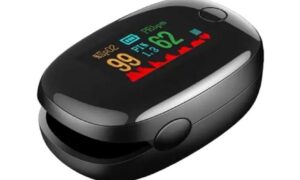Health systems essentially require an immaculate omnichannel customer engagement – a type of a digital window, in order to deliver the personalized, value-based healthcare today’s consumers expect. In practice, however, implementing this digital window is tricky for most healthcare systems. This is due to the fragmented nature of healthcare information.
By standardizing patient data access and exchange, the Substitutable Medical Applications and Reusable Technologies (SMART) platform pledges to address the difficulties of data fragmentation. And considering that SMART is a part of the 21st Century Cures Act*. The platform will soon replace other access methods for electronic health records (EHRs).
How are SMART and FHIR related?
The OAuth 2.0* standard is used by SMART – an open-source, standards-based application programming interface (API), to offer safe, all-encompassing access to EHRs. The existing Fast Health Interoperability Resources (FHIR) provide the foundation of the SMART platform.
Data is standardized via FHIR, while data access is standardized by SMART.
FHIR is a set framework that standardizes clinical concepts stored in different EHR systems and other data silos.
SMART is like a security blanket that sits atop of FHIR interfaces. Applications are granted access to necessary data stored in an EHR or any other SMART on FHIR compliant repository using OAuth2.0 and OpenID Connect.
Do note that FHIR and SMART are not platforms. They are guidelines that tell us how to implement a specific technology and provide seamless data transfer.
What does SMART and FHIR entail?
The two standards entails everything developers require to build applications that will work anywhere within the healthcare ecosystem:
- Open standards for protocols
For authentication, authorization, and User Interface integration that define how to build applications with universal access to EHRs.
- Open-source tools and libraries
For developer’s ease to use SMART standards during application development. The platform also offers a free sandbox that helps them test their apps before deployment.
- An application gallery
This lists all of the FHIR platform’s current SMART-using healthcare applications and software.
Leveraging SMART to Improve Healthcare Interoperability and Delivery
SMART supports healthcare interoperability in the same way standard plugs simplify powering different devices in your home.
Nowadays, most electronic health record (EHR) databases use a standard and protected application programming interface (API). This acts as their unique configuration.
To access medical data, tech businesses must create a unique link for each database. This is expensive and makes it difficult for patients and healthcare professionals to access their data using the technology that suits them best.
Here is where SMART comes to the rescue. It offers a uniform, standardized API for gaining access to EHRs. Any SMART-built technology is compatible with any EHR database that makes use of SMART. Health systems and patients can now access medical data on the applications that best meet their needs rather than just those that are compatible with the EHR database they use since healthcare technology is now interchangeable.
SMART on FHIR defines a workflow for safely requesting access to data, obtaining it, and using it.
How Can the Development of Healthcare Apps Benefit from SMART on FHIR?
- Reusability
With SMART, healthcare apps can be developed faster and SMART-compliant applications can be reused.
Example: A coder/developer creates an application for a provider who only deals with cancer patients. Now, he has received another request from a provider who deals with lung diseases. With SMART, the coder can use the same application with minor tweaks based on the new provider’s requirements.
- Applications gallery
The flexibility that SMART provides will give way to innovations and developments in the healthcare sector by creating a vast application gallery for providers and patients to choose from.
- Open standards
The EHR access methods are disconnected from an application by SMART. Developers are given the opportunity to enhance their software without worrying about how the changes would affect how patients and healthcare professionals use their data. Now even widely used EHRs that were previously off-limits can be directly connected to by apps that use SMART on FHIR.Community support
SMART already has a pretty big community and online forums for healthcare professionals to communicate and understand it better.
What makes SMART on FHIR so great?
By enabling software developers, healthcare providers, and payers to build health-focused apps that can access data from any FHIR API, SMART on FHIR pioneers a new frontier in healthcare. Hundreds of other tech companies, including Apple, use SMART to make health records accessible. The PHR, patient portal, or any other FHIR system can be utilized with the SMART framework to access apps used by clinicians, patients, and others. An app developer can create a SMART on FHIR app and expect it to be compatible with every healthcare system.
By enabling software developers, healthcare providers, and payers to build health-focused apps that can access data from any FHIR API, SMART on FHIR pioneers a new frontier in healthcare.
SMART on FHIR delivers double value.
For both providers and care receivers, SMART provides a seamless and low-cost way to integrate with hundreds of products in a marketplace.
This ability to swiftly replace apps should encourage innovation and create a market that is competitive with those for banking or travel.
It offers developers a tech stack of open, tangible specs and profiles to represent various sorts of data, such as medications, allergies, prescriptions, and medical conditions.
Developers have less work to do since SMART makes decisions regarding data formats (often based on standard codes like SNOMED International).
Take away
The health industry requires fast and optimum data accessibility resources that can accelerate the process of serving the best interest of the stakeholders. With several departments containing fragmented-natured data, EHR integration, and interoperability have become the new norm in healthcare data exchange.
SMART on FHIR offers a unique nodal data point through which data can be shared, secured, and efficiently. The framework is easily adaptable for developers and is of multiple usability.
SMART on FHIR appears to have a bright future in healthcare data exchange and accessibility. The SMART team successfully got language requiring a universal API for health information technology included in the 21st Century Cures Act, allowing easy access to all components of a patient’s record. Now that SMART’s API is required for ONC-certified health IT, SMART adoption is also required for health systems that take Medicare or Medicaid.





























